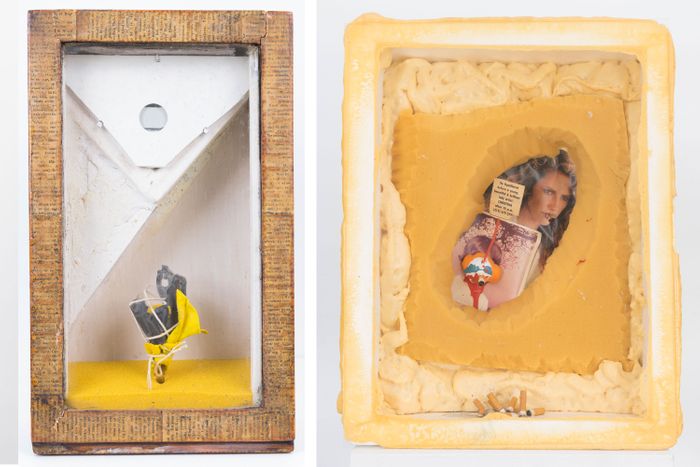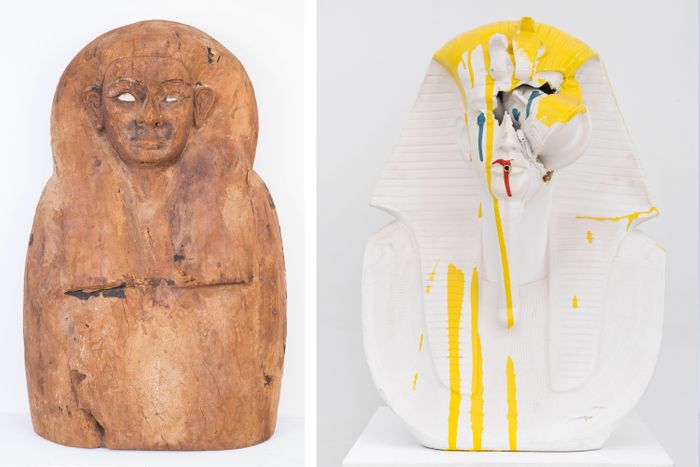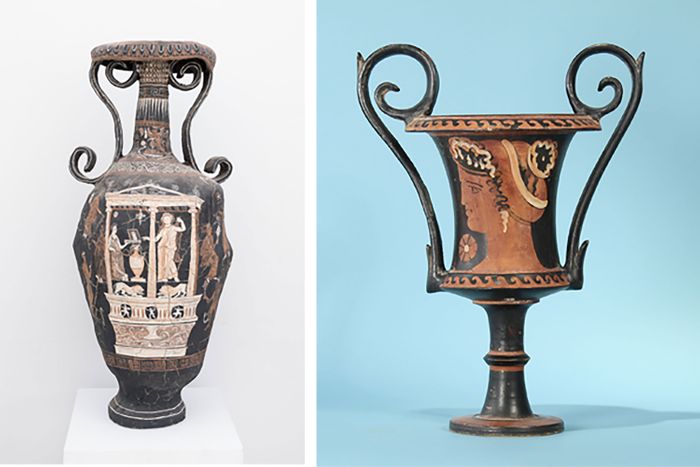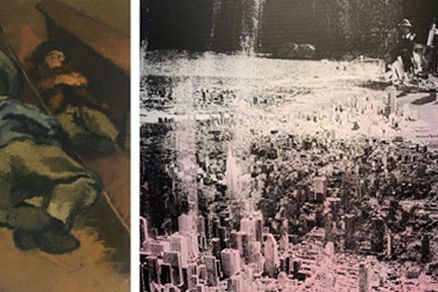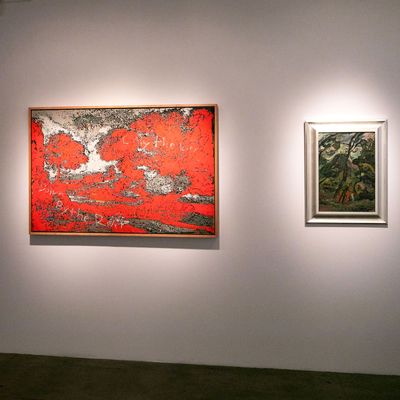
After 15 high-concept years showing art at some of America’s most important museums and, for a while, operating a free art school, the collective known as the Bruce High Quality Foundation continues to approach their work with the irreverence of a college student stumbling into class late with a blinding hangover. The group’s members have insisted on anonymity, though by now their identities are well-known in the art world. So, too, is BHQ’s founding legend: It was named after a fictional artist, Bruce High Quality, who supposedly perished on 9/11.
The group’s latest exhibition, at ACA Galleries, is titled “The End of Western Art,” and, you know, sure, why not. It stays true to the group’s wry and self-consciously well-educated sensibility by coupling their work with historical pieces. Crushed beer cans, stubbed out cigarettes, and dry ramen noodles, among other tokens of eternal adolescence, are contrasted with the work of big-name 20th-century artists and artifacts from the ancient world. (Bruce fans might remember when, in 2013, they recreated the Equestrian Statue of Marcus Aurelius — the ancient Roman bronze statue dating back to 175 CE — with high-density foam, plaster, car speakers, and televisions to replace the heads of the emperor and his horse.)
In “The End,” we have BHQ’s Pharaoh Head — with a cigarette jutting out of its mouth and splashes of red, blue, and yellow paint — coupled with an anonymous Egyptian wooden mummy sarcophagus, which was carved with acacia wood and dates back to 700–300 BC. The red (lips), blue (eyes), and yellow (hair) of the former work are typical of BHQ’s “self-portraits,” which evoke a carnival-like playfulness, and can be found throughout the exhibit.
When asked to caption the pairings, the Bruces wrote, “In 1865 Rudolf Clausius said ‘the entropy of the universe tends to a maximum.’ 53 years later Theodore Parker said ‘the arc of the moral universe is long, but it bends toward justice.’ So vis-a-vis art history, your guess is as good as ours.”
According to Nemo Librizzi, who curated “The End,” the exhibition came together by “a series of coincidences almost bearing on a miracle.” Though it might seem rather like the Bruces created pieces in response to their historical pairings, in fact Librizzi selected work from the Bruces’ studio and matched it with the older work. He wanted the exhibit to at once pay homage to art history while poking fun at it.
“We wanted to make something that kind of lived and breathed, because the Bruce High Quality, their work is always so visceral and kind of punk rock,” he said. “We didn’t want to present it in a too-precious way. So, we decided just to have fun with it and not take ourselves too seriously.”
The ACA has a history of showcasing progressive American artists. In 1944, the gallery staged a radical Picasso exhibit, in which the Spaniard’s work was set side-by-side with his African influences. It would be tempting to assume that “The End” was inspired by that show, owing to the similar juxtaposition-based format. But Librizzi admitted he was unaware of the earlier show.
Like most people, Librizzi was introduced to Bruce High Quality by art dealer Vito Schnabel, who formerly represented the group. At first, Librizzi didn’t understand Bruce High Quality, until he saw a survey of their work at the Brooklyn Museum. He spent a good amount of time reading and watching videos. Then it all clicked.
“I had one of those ‘aha!’ moments. It’s not just some nonsense that I was above. It was something that was a little bit hermetic, that I had to sort of enter into,” said Librizzi. “And once I grasped that, I felt almost a sense of responsibility to help other people have the same insights.”


